Operation True Promise 2: Iran Strikes Again as Missile Barrage Overwhelms Israeli Defenses
Iran unleashed their ‘Operation True Promise 2’ on Israel, sending hundreds of ballistic missiles which passed unopposed through Israel’s porous air defenses.
One video showcasing the speed of an incoming Iranian—allegedly hypersonic—missile:
Watch the above videos of hundreds of missiles hitting Israel, then read this deluded tweet by a Netanyahu aide, who with a straight face declared that most missiles were intercepted:
Yes, the Tweet is actually real.
Video from the Iranian situation room when the order was given to fire an alleged 200 missiles:
The moment when IRGC Commander-in-Chief, Major General Hossein Salami, orders Iran's missile strike on Israel from Khatam-al Anbiya Central HQ.
One must recall, however, what I said about gerontocracies.
The biggest question that remains is whether the missiles have inflicted any real damage, or if they were merely scattershot ‘psychological’ actions.
On one hand, we have videos like the following which show missiles hitting random empty fields:
On the other hand, we have eyewitness accounts and geolocations that appear to show the areas of sensitive targets being hit.
This Twitter thread has a bunch of them, including areas hit near Mossad headquarters, Ort Tel Nof airbase, etc.
These videos in particular claim to be from just outside Nevatim airbase which houses much of Israel’s F-35 fleet:
In one of the Videos, it is filmed from the side of the city of Ararat an-Nakab, the operator films the Nevatim Air Base.
Show coordinates: 31.162038217254675, 35.01097230545869
It is currently impossible to find out whether the Air Base was damaged or destroyed, but the approximate range of the targets of Iranian Missiles is quite clear: Air Bases.
Iranian sources allegedly announced that “over 20 F-35s were destroyed” but of course such statements are usually hyperbolic and not reflective of reality—verification is needed.
In truth, Iran openly admitted notifying the US—and thereby Israel—of the strikes in advance, which gave Israel forewarning to take all their F-35s to the sky. This is standard procedure for high value assets like that before any strike, regularly carried out by both Ukraine and Russia in the SMO.
There are allegedly reports that Israel did in fact take its F-35 fleet to the skies as evidenced by a fleet of refueling tankers that were airborne, which suggests the F-35s were kept aloft throughout the duration of the attack:
So, we don’t yet know if any real damage was done, but the one take away that we’re again able to make is that Iran is at least capable of penetrating all Western air defense nets. That is because the US openly announced their attempt to interdict the strikes as much as possible, in futility—as reported by the official US Naval Institute:
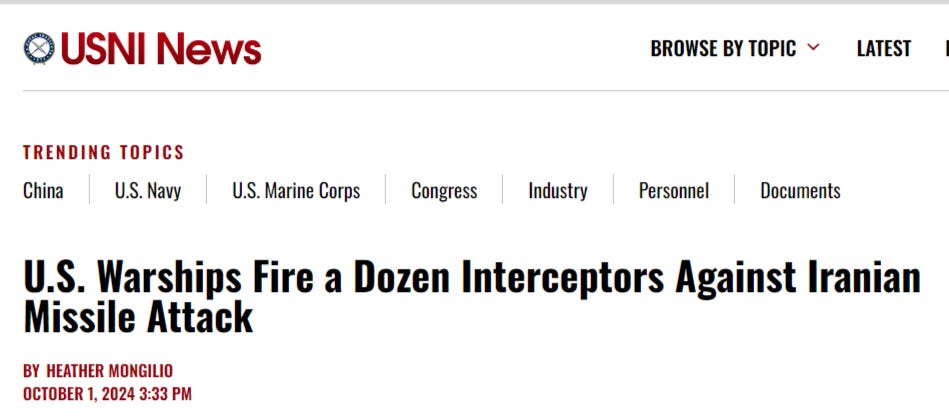
USS Bulkely (DDG-84) and USS Cole (DDG-67) fired a dozen interceptors as part of the U.S. response to Iranian missiles launched at Israel, the Pentagon announced Tuesday.
Iran launched approximately 200 ballistic missiles at targets in Israel, Pentagon Press Secretary Maj. Gen. Patrick Ryder told reporters on Tuesday. He did not elaborate on what type of interceptors the two destroyers used. No ground-based interceptors were used.
They claim no ground based interceptors were used, though Iran begged to differ.
Iran of course again claimed they hadn’t used their best stuff yet:
Iran's Minister of Defense: 'None of our most advanced Missile capabilities were used in Operation True Promise-2'.
It doesn’t really matter in the end, because the attack as per usual is mostly theater, a kind of delicate dance between the warring parties, given that it was telegraphed in advance to notify the recipients for the purpose of de-escalating. Iranian president Pezeshkian afterwards released a statement in fact conveying that Iran had done its show of force and was now finished, insinuating to Israel that the two should accept the parley and de-escalate.
Israel, however, claimed they would respond to any attack large or small—but as per usual, Israel barks loudly while relying entirely on its American backing. Biden had recently signaled he was at the end of his rope with supporting Israeli attacks, which could mean Israel will be forced to back down from its threat of “major” response against Iran. As I said last time, Israel can only create “miraculous” victories on the backs of the entire Western world, which controls the commerce, communications, military, and every other sphere in the region, allowing Israel to wield full spectrum dominance. Without this backing, Israel would not be able to survive on its own, and would have long ceased to exist.
At the same time, Israel has finally invaded southern Lebanon, and what remains to be seen is the true nature of the current battlefield dynamic between Iran and Hezbollah.
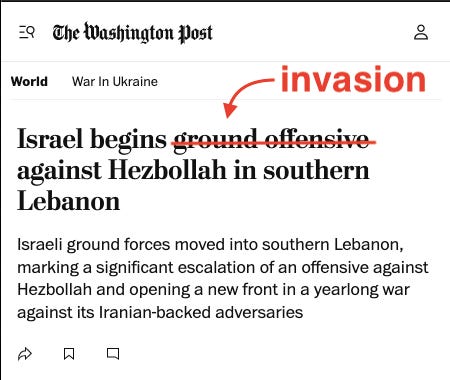
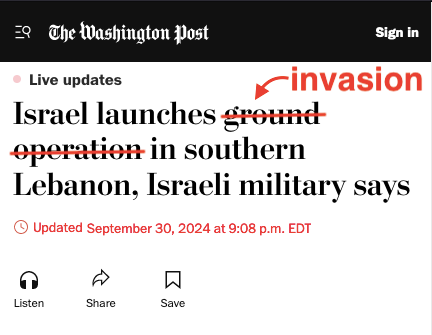
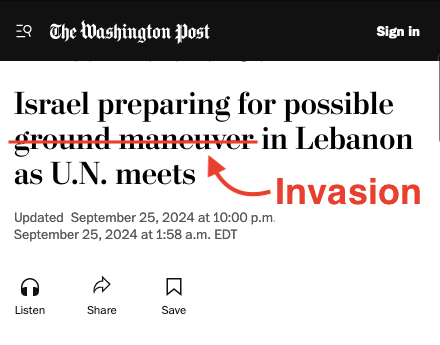
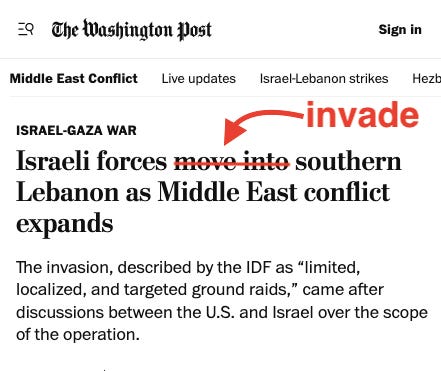
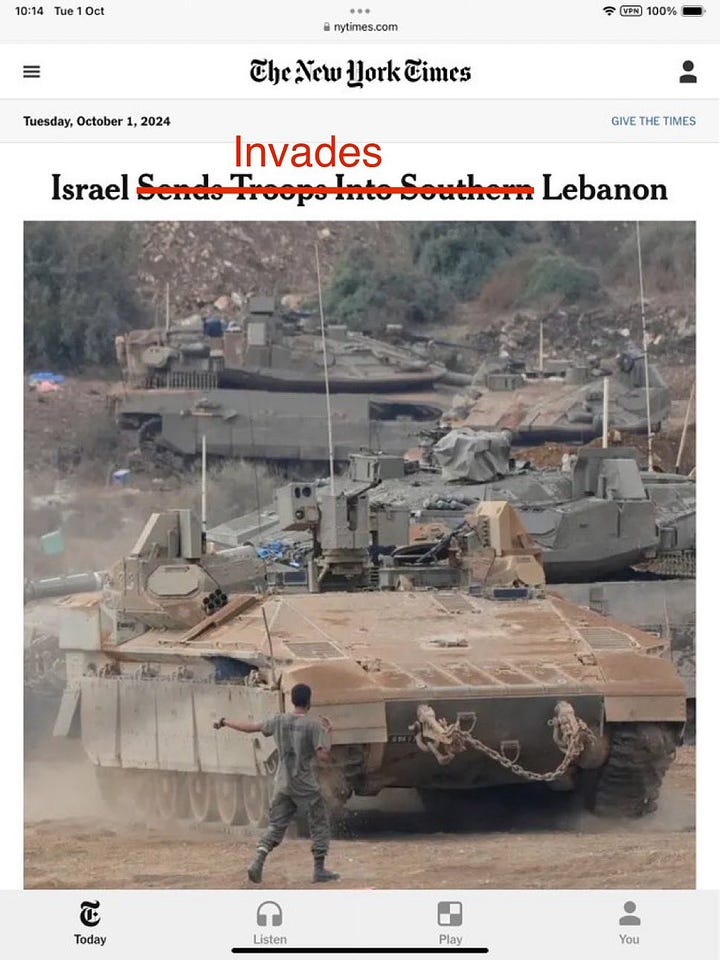
Hezbollah’s Deputy Secretary General Sheikh Naim Qassem released a statement that Hezbollah is ready to repel the Israeli assault:
🇱🇧 WE'RE READY AND PREPARED TO CONFRONT ISRAEL GROUND OFFENSIVE, WE WILL BE VICTORIOUS, declares Hezbollah's Deputy SG Qassem in first live statement since assassination of party's chief Nasrallah and other leaders, stressing "Vast majority of Hezbollah's medium, long range weapons capabilities fully intact, despite Israeli lies".
Our fight will continue, everyone on battlefield is ready, and despite losing our leader and commanders, we will never forsake our duty in support of Gaza and in defense of Lebanon - he adds, reaffirming Washington's involved in massacring Lebanese civilians alongside Israel.
Qassem eulogizes "Popular, loved leader Nasrallah who dedicated his life to resistance and struggle" in 2nd video, stressing new SG will be chosen in near future, adding "We will fill leadership positions steadily. Be assured choices will be straightforward because they are clear".
Even Hezbollah’s greatest detractors and enemies admit that the death of Nasrallah is fairly meaningless vis-a-vis Hezbollah’s military integrity.
For instance, take Mohammad Ali Al-Husseini, “a Shiite cleric from Lebanon, who has known Nasrallah since their youth and for years has been one of the strongest critics of what Nasrallah and the Iranians have done to Lebanon.”
This cleric, said to now live in Saudi Arabia, is considered a traitor and would not otherwise be a reliable source on Hezbollah’s activities, except when it comes to the fact what he says rings true, and has been echoed by others in the past: that Hassan Nasrallah was not really the man in charge of Hezbollah’s military wing, at least in regards to making the final calls on military actions.
One must remember that in many Arabic cultures, things work a little differently, and responsibilities are delegated in ways that may appear confusing. For instance, in Iran the president is not really in charge of the military, which is the domain of the Ayatollah or Supreme Leader. Similarly, Hezbollah as an organization can be confusing because it is both a political party and movement, as well as military wing.
Al-Husseini below basically states that Nasrallah was more of the mouthpiece or spokesman—the public “face” and spiritual leader of the organization. But the people who actually make the hard military decisions in Hezbollah have differed over the years—they include figures like Imad Mughniyeh and Fuad Shukr:
Hezbollah’s enemies can lie when it benefits them or makes Hezbollah look bad, but in this case Al-Husseini’s message appears to grudgingly defend Hezbollah’s resilience by admitting that the death of the figurehead does not affect the integrity of Hezbollah’s internal military decision-making power structure.
Here’s a handy map comparing Israel’s previous border incursions:
On the left where it says ‘Number’ it should be ‘Tyre’.
As a very brief summary, Israel has invaded Lebanon three major times since the ‘70s. The 1978 and 1982 invasions were essentially due to claimed attacks by Palestinian groups based in Lebanon. In 1978 Israel went up to the Litani River roughly at the Tyre latitude in southern Lebanon, and in 1982 they made it all the way to the north past the Awali River, besieging the capital of Beirut. Both times the UN eventually expelled them back south.
In 2006 they tried again to go all the way to the Litani—but this time they weren’t facing the PLO, but Hezbollah for the first time. One of the key differences is Hezbollah was armed with large amounts of ATGMs, which the PLO didn’t have, nullifying Israel’s armor and tank advantage. This time IDF could not even get past a few miles into southern Lebanon before giving up. The battle of Bint Jbeil was the main battle, only a couple kilometers from the border:
Both sides were able to claim ‘victory’ however because, in Israel’s case, they claimed to have destroyed a large amount of Hezbollah rockets and infrastructure in widespread strikes throughout the country.
I mention this important fact because I can see the current conflict potentially going the same way. You see, the Middle East has a way of being redundant, when you study its long history. Many of the conflicts replay over and over again in similar fashion, with similar ever-inconclusive results. For instance, much of the current Gaza invasion that Israel has been perpetrating since last October has the hallmarks of Operation Defensive Shield in 2002, and yet that one likewise ultimately accomplished nothing.
To understand geostrategy and geopolitics, one must understand that both side’s aims are to appear victorious, particularly in frozen-style conflicts where no truly decisive victories are possible for a variety of reasons. As such, each side strives to posture and affect some kind of big moral or political victory. In Netanyahu’s case, he would love to present some kind of victory to fortify his weakening rule.
Thus, there’s a strong chance that Israel could go in, do some damage as always, and amid mounting international pressure, withdraw under the guise of some “major victory” based on claims of disabled Hezbollah infrastructure, etc. Meanwhile, Hezbollah merely has to keep the IDF from advancing to some key point like the Litani River, and credible victory can be claimed for them, no matter the losses. Iran can then chime in and say their ‘overwhelming attack’ knocked out so much Israeli infrastructure as to have thwarted the whole campaign. It’s really a theater of sorts, with nothing of note being accomplished in the end.
Israel’s objectives make no logical sense and are not realistically achievable. That is, the chief stated objective of creating a buffer zone such that northern Israel can be secure from Hezbollah rocket attacks in order to facilitate the return of Israeli citizens. But any such settlement cannot possibly last because it would require Israel to devote inordinate forces to occupying all of southern Lebanon indefinitely. And if they were to withdraw, then Hezbollah can immediately resume acting as before. That’s not to mention the fact that Hezbollah has longer range capabilities such that pushing them back to the Litani would not accomplish much, as that’s a mere 23km from the border, a distance easily covered by around 50% of Hezbollah’s rocket types.
Thus, most likely Israel will take a few border villages, then if they cannot suck Iran into a giant regional war, backdoor emergency agreements will be struck by the US to prevent having to go to war against Iran. Israel would then save face by withdrawing under shallow claims of some obscure ‘victory’ with a list of phony Hezbollah assets destroyed, etc. At the same time, Israel will probably get a bunch of secret concessions from the historically weak US administration in exchange for saving the US from having to do heavy lifting against Iran.
I agree with this take:
That being said, we have now entered October, the fateful month of the great October Surprise and various awaiting black swans that threaten to spoil the election one way or another, under the elites’ guiding hand. So it’s not completely out of the realm of possibility that the Israeli conflict can somehow spark into something much larger and uncontrollable to fulfill the needed script.
For what it’s worth, Jared Kushner wrote a long screed espousing his demented theory that Israel’s ‘destruction’ of Hezbollah is the gateway to effectively burying Iran. He cites Hezbollah as a ‘loaded gun pointed at Israel’ which was the sole bulwark protecting Iran’s nuclear facilities from being taken out. But after Israel finishes off Hezbollah, Kushner appears to imply Iran can be safely dealt with without fear of reprisal. It’s likely he’ll be eating his words in the not too distant future.
However, he appears to point to a concerted plan, echoed by Naftali Bennett in today’s blurb from NYTimes:
In fact, all the Mossad mouthpieces have come out in concert with this same spiel, confirming that this is in fact the orchestrated plan Israel is attempting to carry out:
As a last interesting note, around the time of Iran’s attack, Russian Deputy Prime Minister Chernyshenko was heading to Iran:
At this moment, a passenger plane Tu-214 of the Special Flight Squadron "Russia" with Deputy Prime Minister of the Russian Federation Dmitry Chernyshenko is in Iranian airspace.
All the while, the full-on Prime Minister Mikhail Mishustin had landed yesterday to meet with Iranian president Pezeshkian amongst others:
Some sources claim Mishustin was there to sign a major gas deal called the ‘contract of the century’, though official Russian outlets are more mum on the trip. Unreliable Moscow Times claims:
Under this “strategic agreement,” Iran will receive 300 million cubic meters of Russian gas per day through a new pipeline that Moscow plans to build under the Caspian Sea in direct competition with Azerbaijani and Turkem plans for an east-west pipeline.
We’ll keep the Ukraine news light today. Israel’s invasion and subsequent Iranian attack obscured the news that Russian forces finally captured Ugledar after two years of bitter fighting.
The 36th Separate Guards Motor Rifle Lozovskaya Red Banner Brigade is a tactical formation of the Ground Forces of the Russian Federation. It is part of the 29th Guards Combined Arms Army of the Eastern Military District. Its permanent deployment point is in Borzya, Zabaikalsky Krai.
Apart from the Vostok Buryats there are many other units yesterday took part in this awesome operation in Ugledar, here are the The 40th separate guards marine brigade operating inside the city
The STORM detachment. The 40th separate guards marine brigade captured a block of high-rise buildings on the western side of Ugledar. For the first time, the vest is raised, which is considered a symbol of the courage and bravery of a Pacific warrior.
Geolocations for the above video montage:
Russian Army took Ugledar! - DS
▪️The military resource Deep State, working for the Main Intelligence Directorate, analyzed the video of the raising of flags and, after checking with its sources, confirmed the loss of the city by Ukraine.
▪️Other Ukrainian military analysts also draw this conclusion from numerous videos of Russian flags in different parts of the city.
Your support is invaluable. If you enjoyed the read, I would greatly appreciate if you subscribed to a monthly/yearly pledge to support my work, so that I may continue providing you with detailed, incisive reports like this one.
Alternatively, you can tip here: buymeacoffee.com/Simplicius





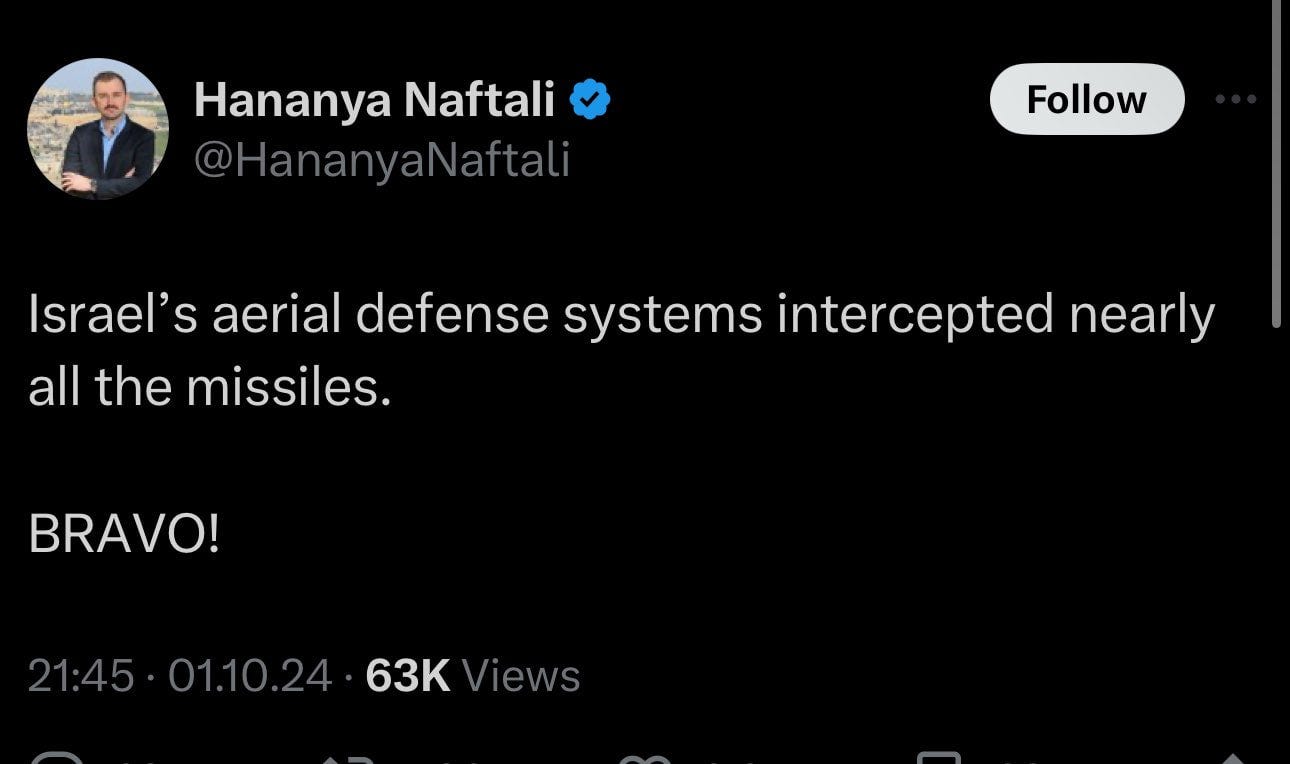
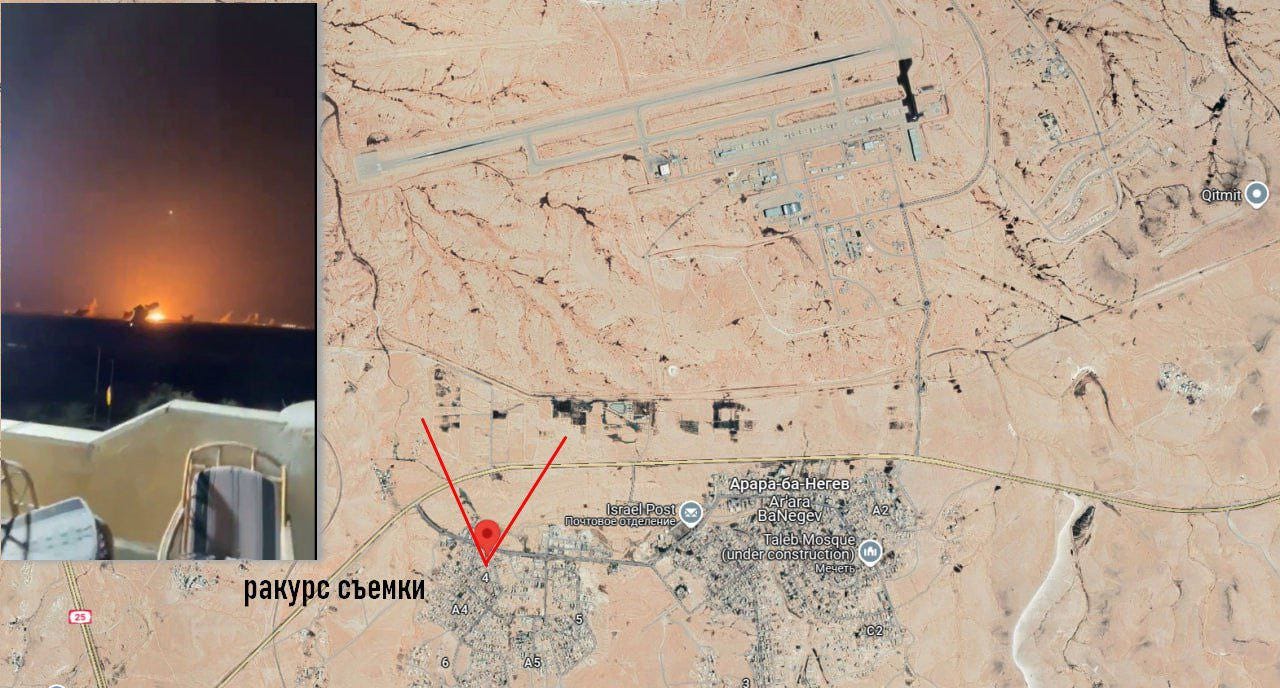
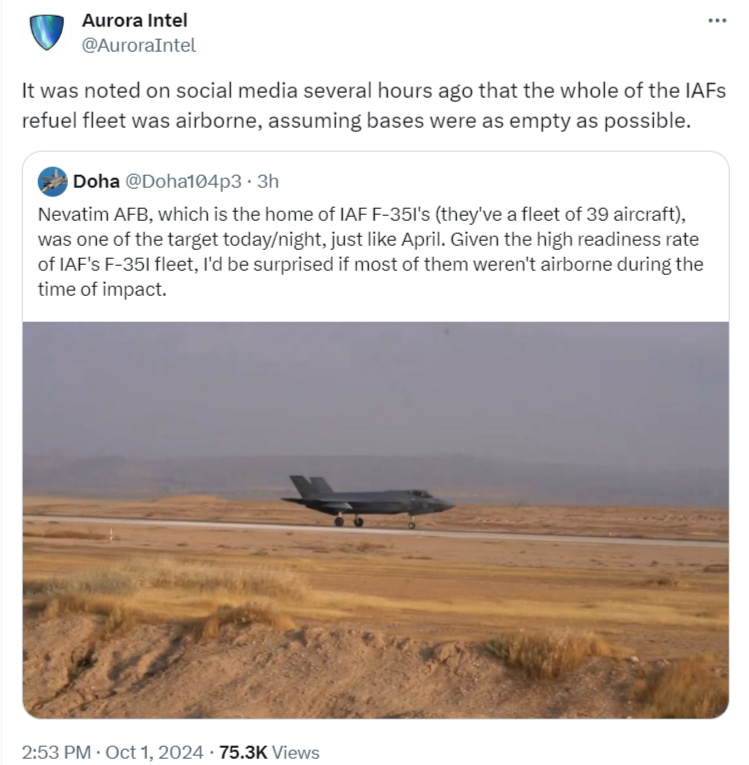
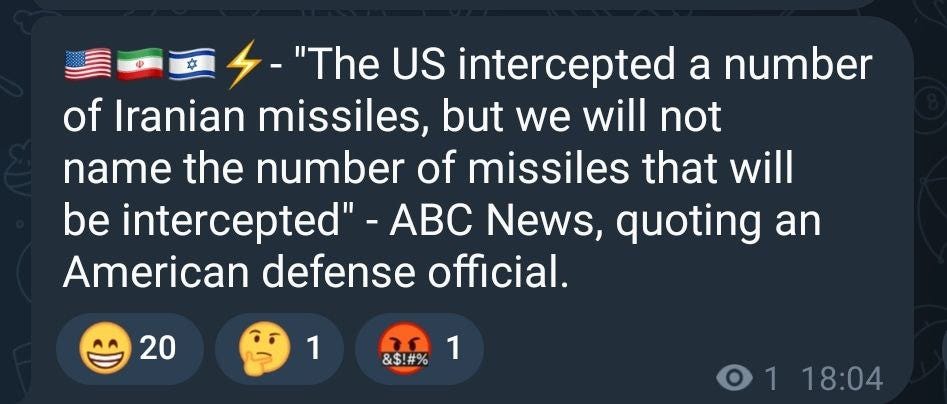
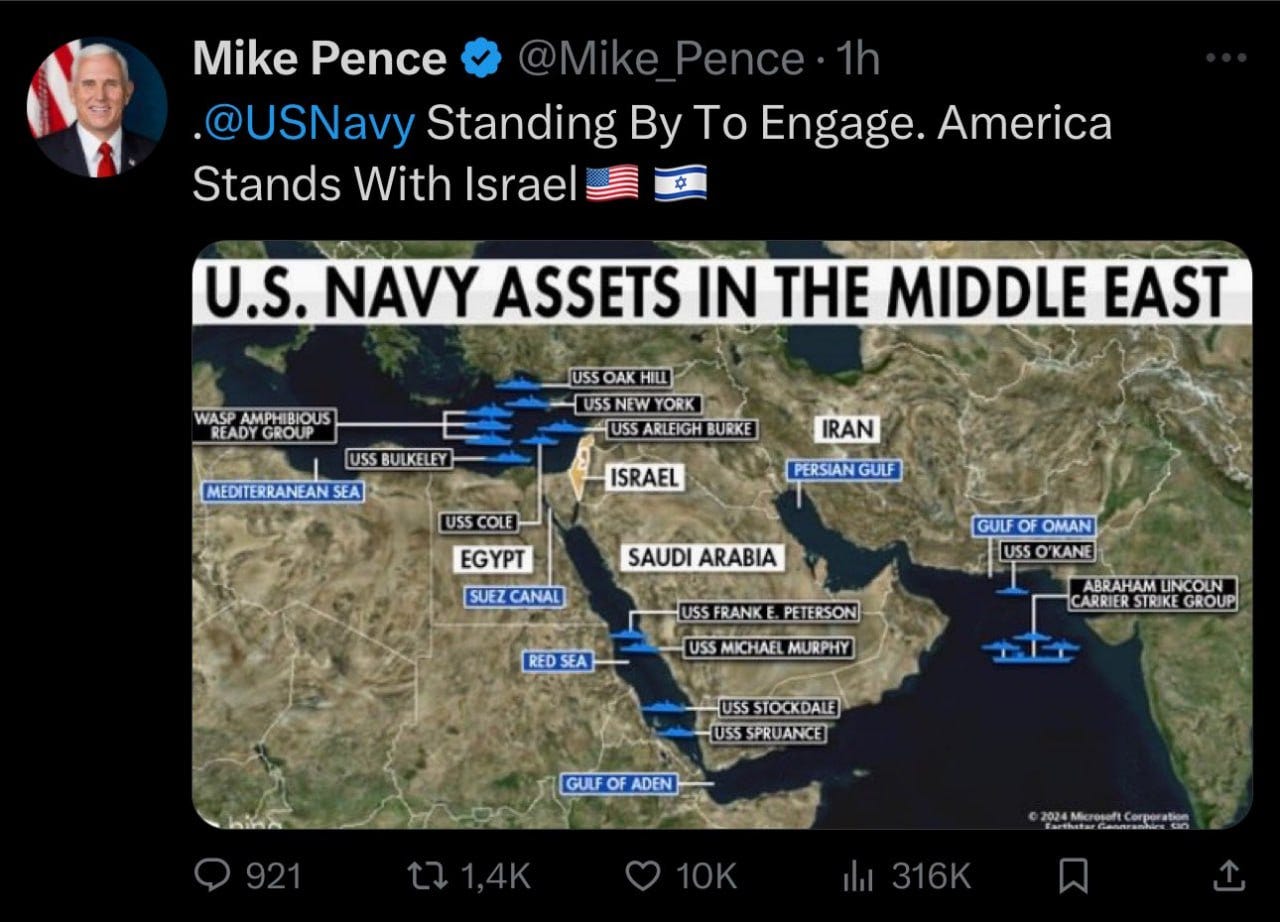
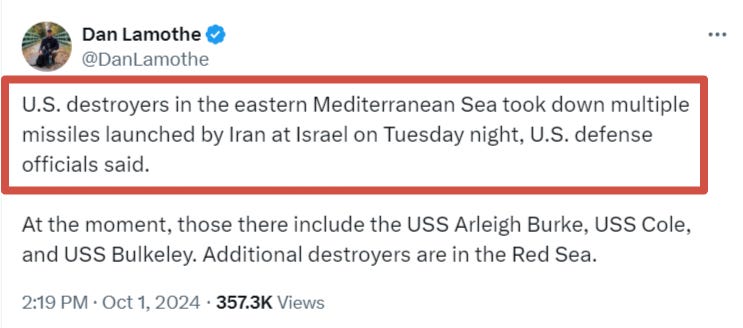

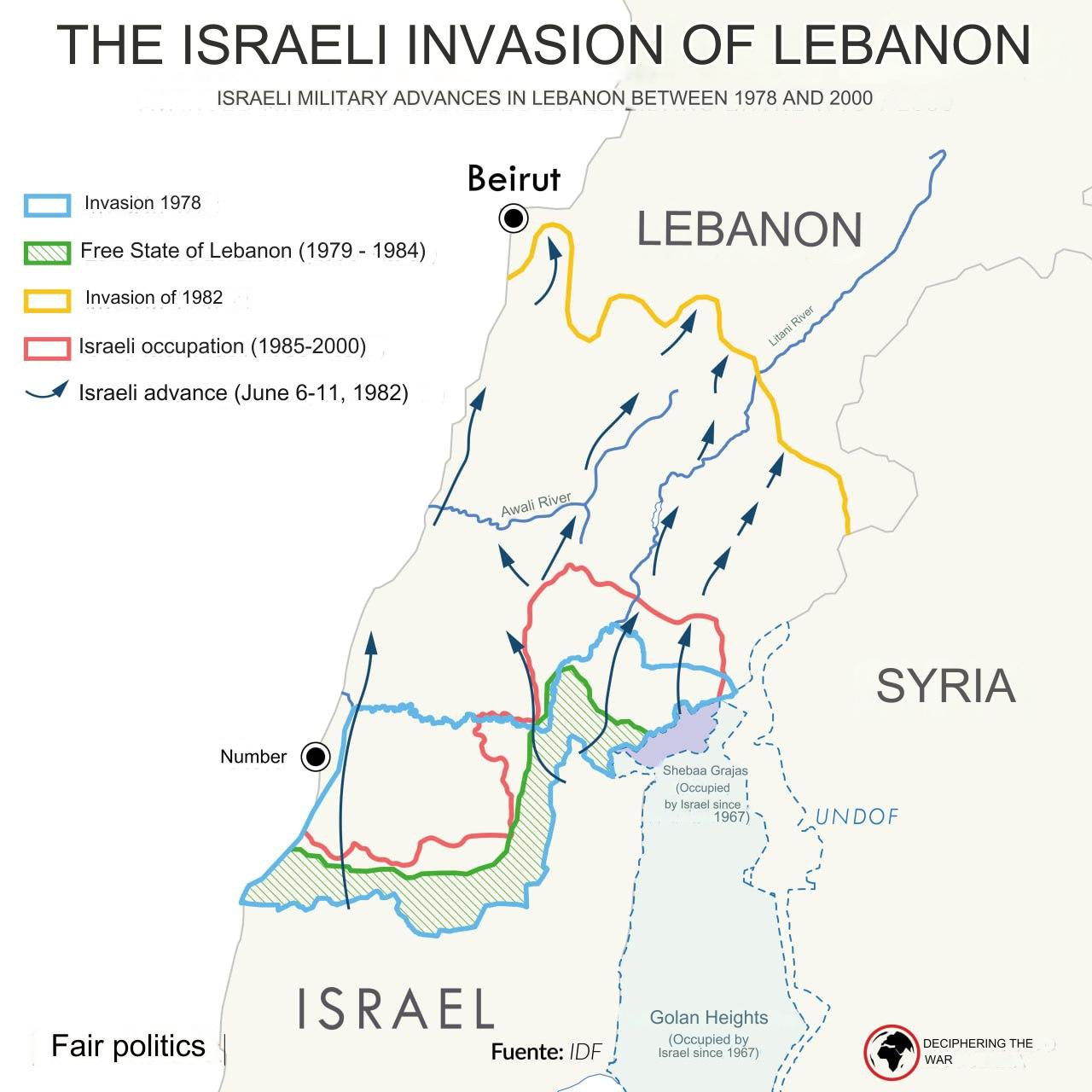
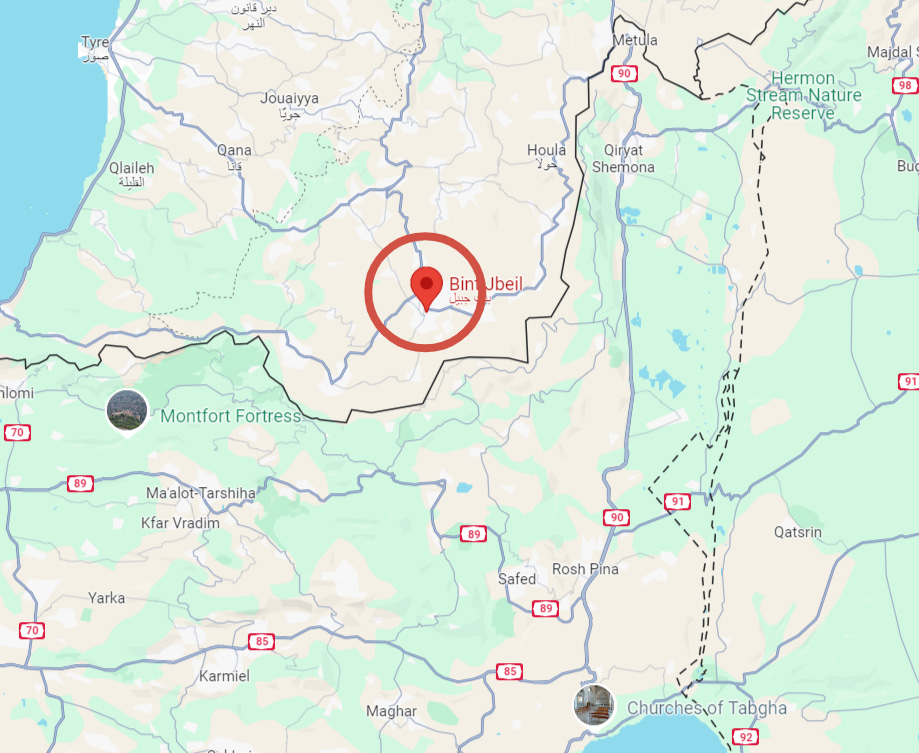
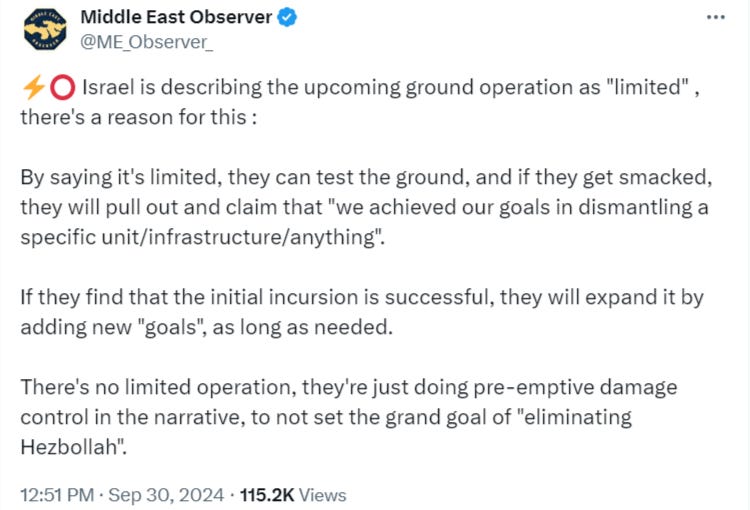
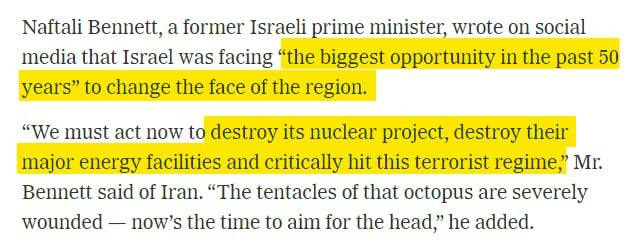

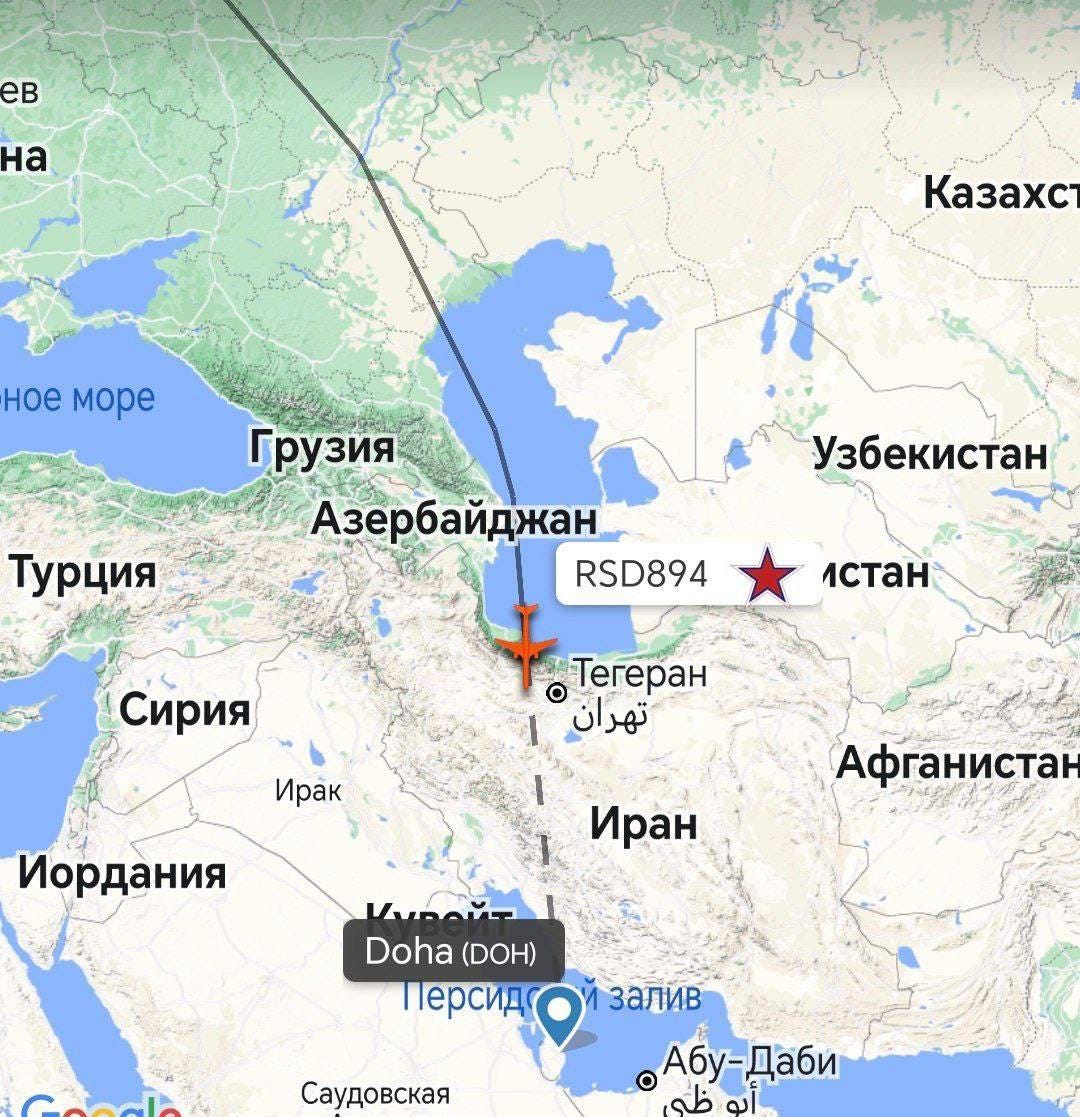

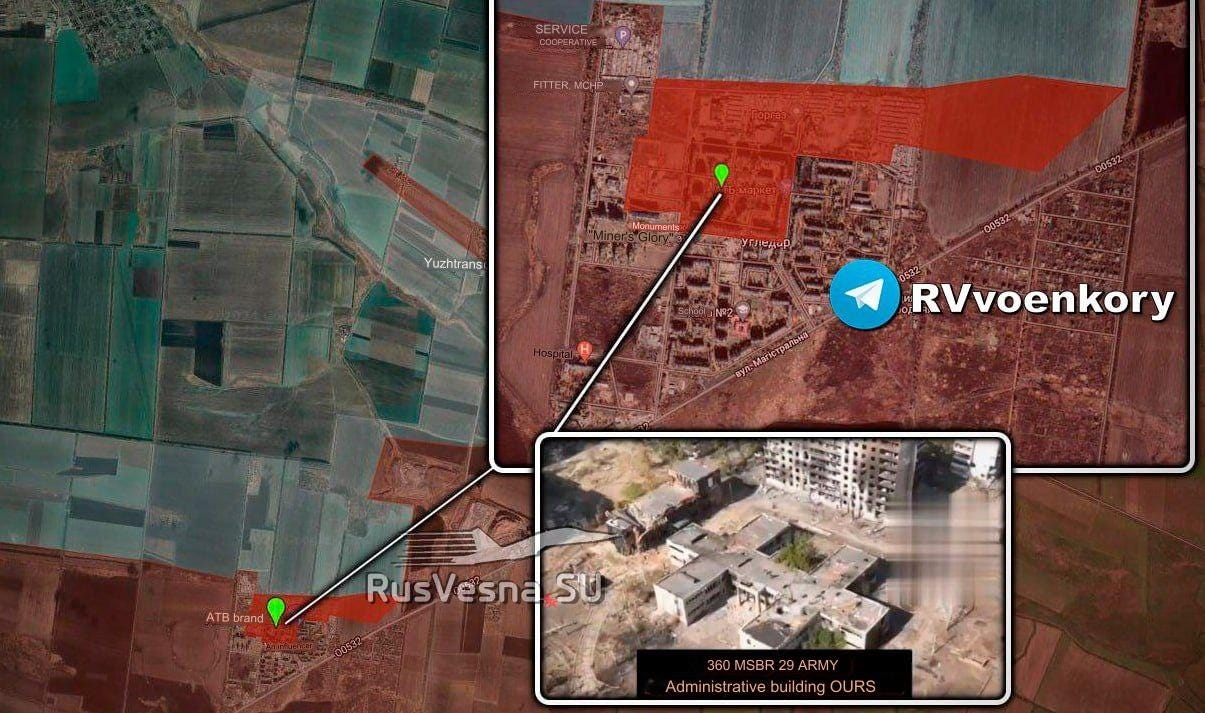
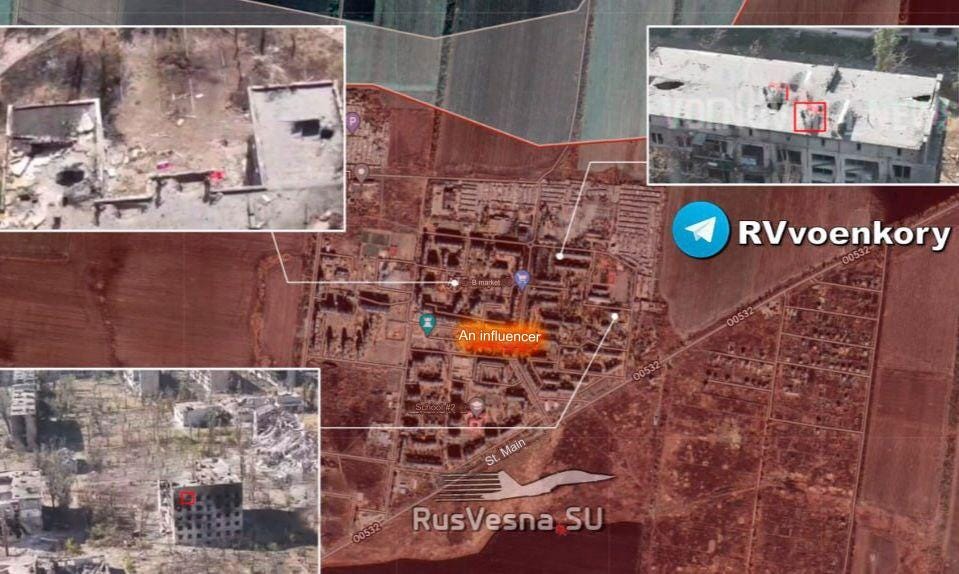
LONG LIVE Islamic Republic of Iran and the Axis of Resistance!
Well, I wouldn't be so quick to label this attack "theater". They surely hit some things of value. Netanyahu's hands were visibly shaking during a press appearance. I suspect some significant damage was done and the Israelis are shaken by the inadequacy of their air defense. I think this was important.